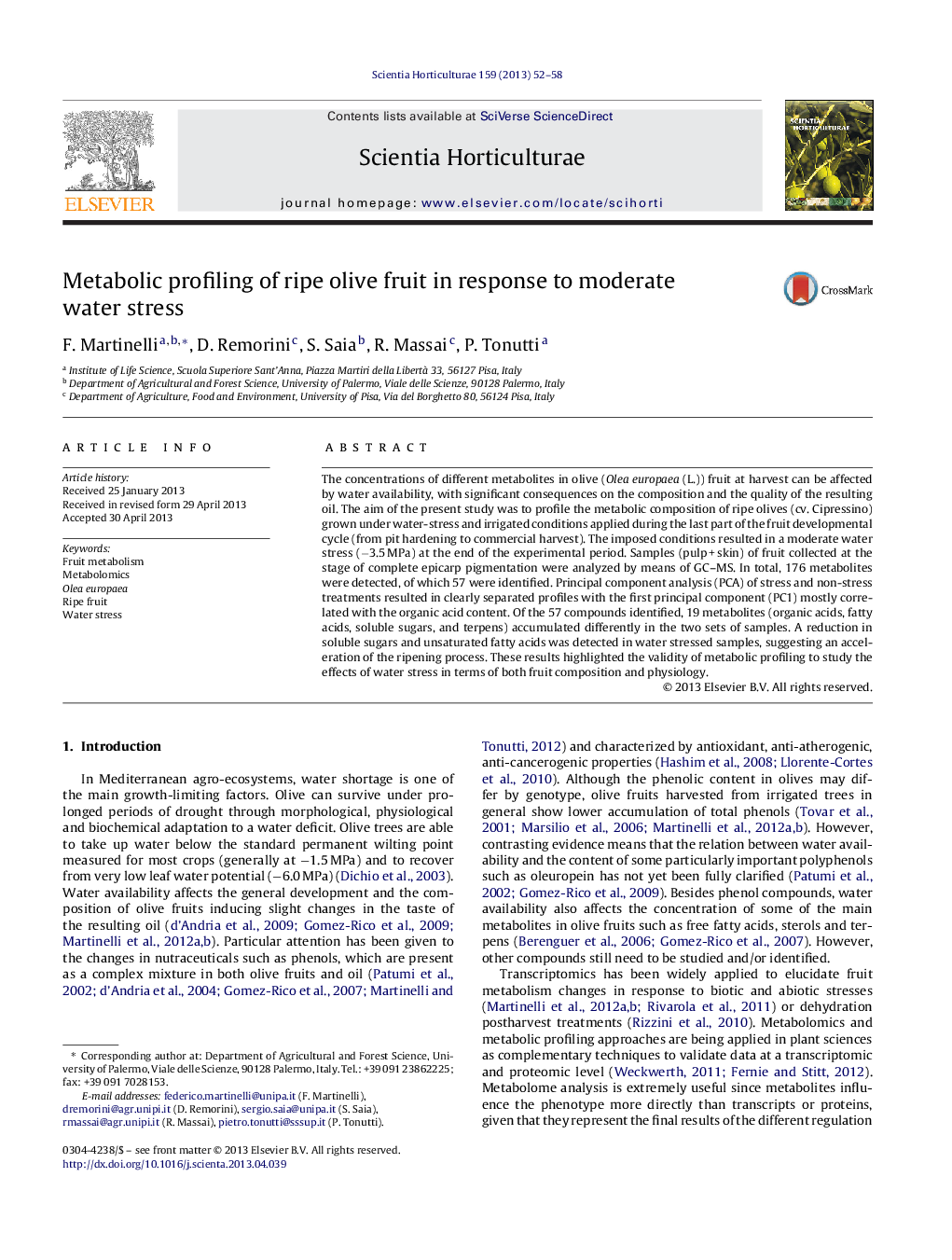| کد مقاله | کد نشریه | سال انتشار | مقاله انگلیسی | نسخه تمام متن |
|---|---|---|---|---|
| 4567220 | 1628839 | 2013 | 7 صفحه PDF | دانلود رایگان |

• The composition of olives at harvest was studied by means of metabolomics approach.
• 176 metabolites were detected and 57 were identified by GC–MS.
• The accumulation of 19 metabolites was affected by water stress.
• Soluble sugars and fatty acids showed the most pronounced changes.
• The first component analysis in PCA was mostly correlated with organic acid content.
The concentrations of different metabolites in olive (Olea europaea (L.)) fruit at harvest can be affected by water availability, with significant consequences on the composition and the quality of the resulting oil. The aim of the present study was to profile the metabolic composition of ripe olives (cv. Cipressino) grown under water-stress and irrigated conditions applied during the last part of the fruit developmental cycle (from pit hardening to commercial harvest). The imposed conditions resulted in a moderate water stress (−3.5 MPa) at the end of the experimental period. Samples (pulp + skin) of fruit collected at the stage of complete epicarp pigmentation were analyzed by means of GC–MS. In total, 176 metabolites were detected, of which 57 were identified. Principal component analysis (PCA) of stress and non-stress treatments resulted in clearly separated profiles with the first principal component (PC1) mostly correlated with the organic acid content. Of the 57 compounds identified, 19 metabolites (organic acids, fatty acids, soluble sugars, and terpens) accumulated differently in the two sets of samples. A reduction in soluble sugars and unsaturated fatty acids was detected in water stressed samples, suggesting an acceleration of the ripening process. These results highlighted the validity of metabolic profiling to study the effects of water stress in terms of both fruit composition and physiology.
Journal: Scientia Horticulturae - Volume 159, 30 July 2013, Pages 52–58